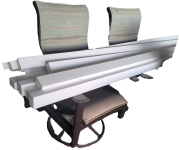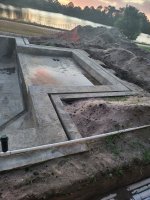I'm in the process of building a small plunge pool in a new construction basement. Instead of a grated overflow gutter, I would like to utilize a knife-edge or slot overflow. I have not found any practical solution available for a small scale application (only commercial pool solutions). I will cast a concrete gutter if I can't buy an off-the-shelf solution, but hoping to find something to simplify things.
~7'x18' surface area, cast concrete with tile. Surge tank in adjacent, lower level room.
Intend to install recessed getter on 2 sides (requiring a corner)
Any ideas? thank you!
~7'x18' surface area, cast concrete with tile. Surge tank in adjacent, lower level room.
Intend to install recessed getter on 2 sides (requiring a corner)
Any ideas? thank you!



